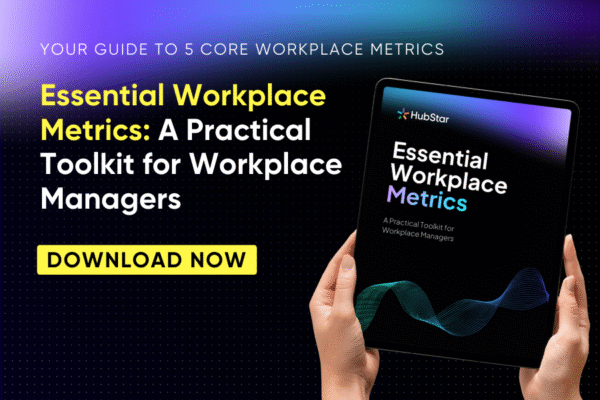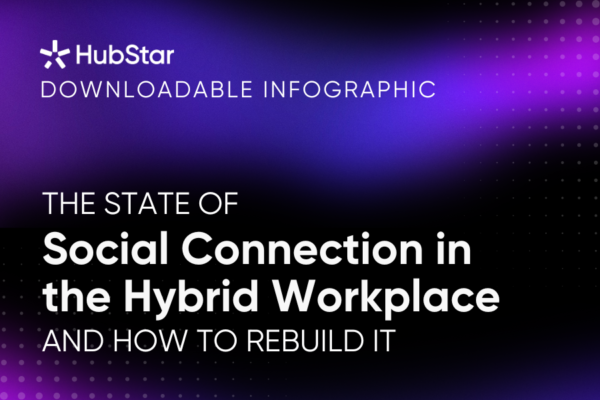Workplace Analytics
Top Two Reasons Why Traditional Workplace Metrics Aren’t Enough in 2025
The workplace has evolved, but the metrics we use to measure its success haven't - until now. Here's why measuring traditional workplace metrics alone isn't cutting it anymore in 2025.

The times, they are a-changin’…especially when it comes to workplace metrics.
The way workplace leaders measure the success of their strategies and investments has evolved from efficiency to effectiveness, seemingly in the blink of an eye.
But why?
The metrics we’ve relied on for decades aren’t enough to create successful workplaces today. Here’s why.
Essential Workplace Metrics: A Practical Toolkit for Workplace Managers
Which workplace metrics should you add to your roster? And how can you get stakeholders on your side to make the right changes? Download this toolkit to find out.

The evolution of workplace metrics has been creeping up on us forever, but why this sudden leap in how we measure workplace success?
How come workplace leaders are shifting gears so radically and upping their game now?
Well, the top reason is variable attendance.
Reason #1: Variable attendance
To cut a long story of workplace evolution short, like always, we’ve got a bunch of people, we’ve got a bunch of spaces, and we’ve got to match the people with the spaces and make sure the spaces work for the people.
Get it right and we make people more productive, collaborative, creative, smart, healthy, and performance improves.
Get it wrong and all these things suffer so performance goes down while we burn budget on wasted space.
This game used to be super easy (compared to today anyway) because the math was simple.
One person equals one space.
Hiring 1,000 people? Assign 1,000 desks.
As for figuring that out and measuring success, you could use basic efficiency metrics, like cost per square foot and density.
Now? Well now it’s super hard, because we have no idea how much space one person needs. Maybe one desk, maybe none, or maybe something in between.
Hiring 1,000 humans, add… hmmm. No idea how many desks.
Workplace management is hard, if you’re trying to do it the old way anyways.
And who are these people? People who live within a certain distance from the building? Or the people in the building today? Do they even want a desk?
Most offices are flipping from 70% desks and 30% collaboration space to more like 70% collaboration and 30% desks, because that’s where the employee demand lies.
That’s why people want to use the office.
Infographic: The State of Social Connection in the Hybrid Workplace & How to Rebuild It
Connecting and collaborating with colleagues consistently ranks as the top reason people come into the office. But are they getting what they're after?

So it’s no wonder that ‘seats per square foot’ has lost its shine as a top metric, when seats aren’t really the main thing any more.
And what use is square feet per person when you don’t have a clue which people are consuming space?
Not to mention the fact that today there are more space types than ever, like lounges, team neighborhoods, phone booths, event spaces and more.
These different types of spaces should have very different levels of experienced density, depending on their purpose. In a hipster city restaurant, for example, it’s cool to sit close to other tables in a cosy space. But you might be less cool with the same level of density in your doctor’s waiting room. Same goes for the workplace.
So those traditional density metrics that measure how space is planned are being deprioritized versus metrics that measure how space actually performs. In fact, according to CBRE, for the first time, square foot/meter per person and per seat are no longer even in the top five metrics that matter most.
In a world of variable attendance, the only way to figure out how much and what kind of spaces we need is to measure actual usage behaviour. Because we need to understand employee demand.
Then we need to continuously adapt our supply of space to meet that fluctuating demand; and make sure we match the right people with the right spaces at the right time, when everything is a moving target.
That’s the essence of a dynamic approach.
What is Dynamic Workplace Management?
How can you pull off success in an age where office attendance is all over the place and every target is a moving one? Enter dynamic workplace management.

We can’t assume policies, guidelines and plans will pan out as expected, without measuring what actually happened. Attendance. Show-up rates. Average number of visits. How many people are coming in one, two and three days a week.
Maybe average cost per visit is more useful than total occupancy cost per person – as in dividing the fully loaded cost by the number of distinct people in your ecosystem who actually use the space.
And finally, in a world of variable attendance – room to room, neighborhood to neighborhood – someone needs to monitor and actively resolve any issues, because achieving that balance isn’t easy at the micro level. You need to be on it.
So variable attendance, due to hybrid work, is a major shift that’s driving our need for a metrics rethink.
Another reason for the sudden prioritization of how we measure workplace success is one we don’t talk about so much, and that’s chronic indecision.
Reason #2: Chronic indecision
Technology enables us to do more sophisticated things, faster. This means the bar keeps getting higher in terms of what the workplace needs to do to keep up.
As a result, we have to make better decisions faster than ever. So it’s a really big problem that so many of us are stuck in chronic indecision.
Why is this happening?
One reason is that the number of stakeholders involved in any given decision has risen a lot.
CRE, HR and IT are no longer separate. The pursuit of workplace value is a combined, collaborative challenge.
It’s not just true for the workplace, but a universal characteristic of organizations. As problems become more complex and systemic, roles need to become more strategic.HR used to be a back-office function, but now it’s a lot more strategic.
And today it’s CRE’s turn.
This ever rising cross-functional-ness is why you’re seeing a rise in CRE leaders reporting into People leaders; and titles like Head of People and Place springing up.
The world has made the connection between workplace experience and people outcomes. And we all know by now the link between engagement and profit is inextricable.
This increase in stakeholders is potentially great because the complex, systemic problems we’re facing these days require holistic solutions. Otherwise we play strategy whackamole, fixing something in one area, completely unaware that we’re making a new problem pop up some place else.
But every time you add an additional human into any decision-making scenario, the probability of actually making a decision goes down.
This is where metrics become super important. Without the right data and the ability to tell data stories, it’s hard to agree what the problem is, let alone the solution. We need group alignment on the problem, the solution and the plan to get stuff done.
If we don’t up our metrics game, we can’t develop a data-driven, dynamic culture of continuous transformation. And if we don’t develop a data-driven, dynamic culture of continuous transformation, we can’t adapt to our fast-changing environment. And that leaves us vulnerable rather than resilient, because we’re hurt by change instead of gaining an advantage from it.
If you’re wondering how to measure the value of your workplace, not just how much it costs, our upcoming webinar is for you. We’ll cover:
- Why workplace metrics have changed from efficiency to effectiveness
- How to adopt a data-driven approach to workplace change
- Emerging metrics to add to your roster
Essential Workplace Metrics: A Practical Toolkit for Workplace Managers
Want to find out which metrics you need to align your workplace strategy with actual employee behaviours? We spill the beans in this toolkit.

Share this post
You might also like


















